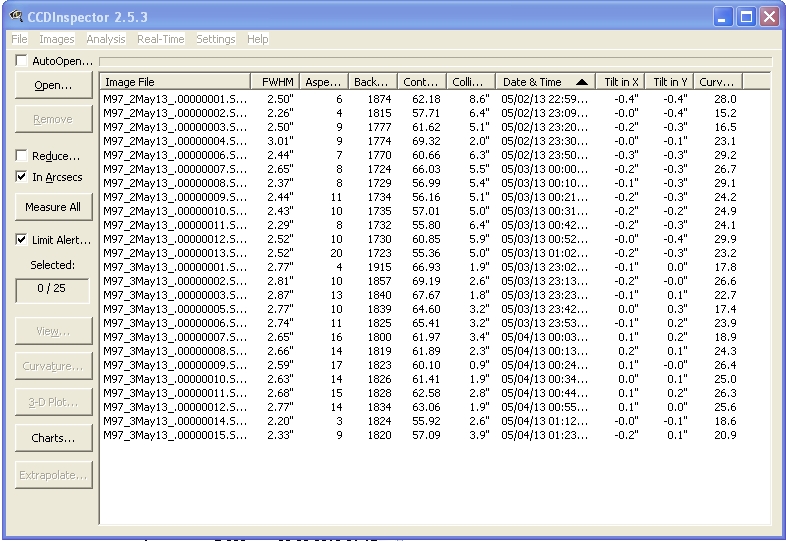Milkyway:
M97 - The Owl - planetary nebula in Ursa Major 3'rd and 6'th of May 2013
Orion Optics VX12 F4 working at F8 with TeleVue 2x Powermate 2 Inch, SBIG ST-4000XCM -25C 4h10min (25x600sec). Light travel time: 2600 years.
The Owl Nebula is one of the largest planetary nebulas, its apparent size is about 204x192 arcsec, its actual diameter is about
1.5 light years. The nebula was discovered in 1781 by P. Mechain in 1848 Lord Rosse gave rise to the
resemblance to an Owl's face. He reported the nebula as having two dark circular perforations with a star in each cavity, one of these later faded away. The central star is a 16'th magnitude
white dwarf with about 70% the mass of the sun.
The Owl nebula is the result of the end life of a star similar to the sun. As fuel eventually burns out the star collapses
into a white dwarf star. In the process it casts away its outer layers which are
excited by the light emitted from the >100000 Kelvin hot white dwarf star and glows with
colors corresponding to the emmision lines of the various gasses cast off.
Description of M97 at the Calar Alto observatory
Processing: CCDSoft, Astroart 5.0.
Author e-mail: webweichel(snabel-a)gmail.com
Log of CCD Inspector:


